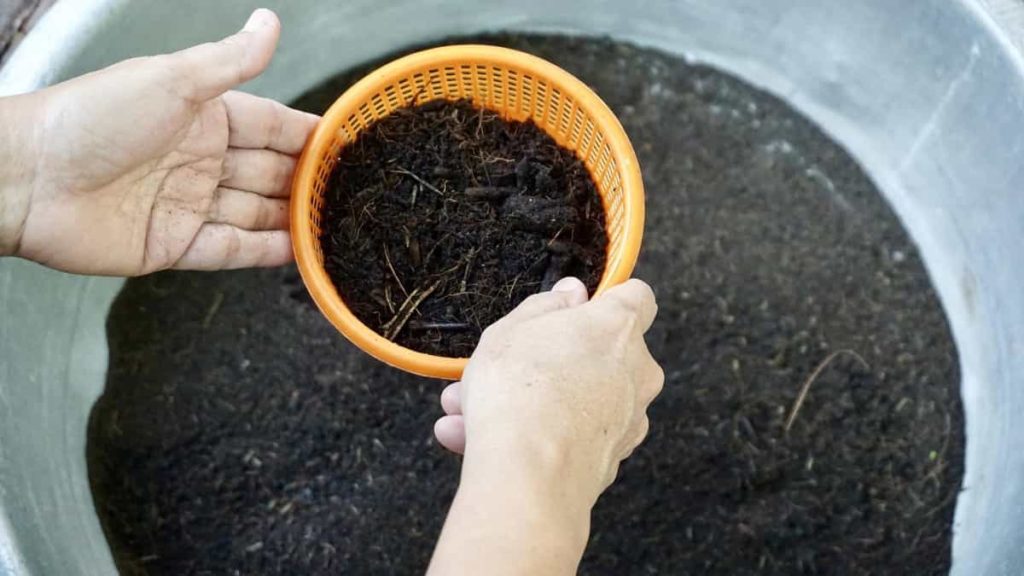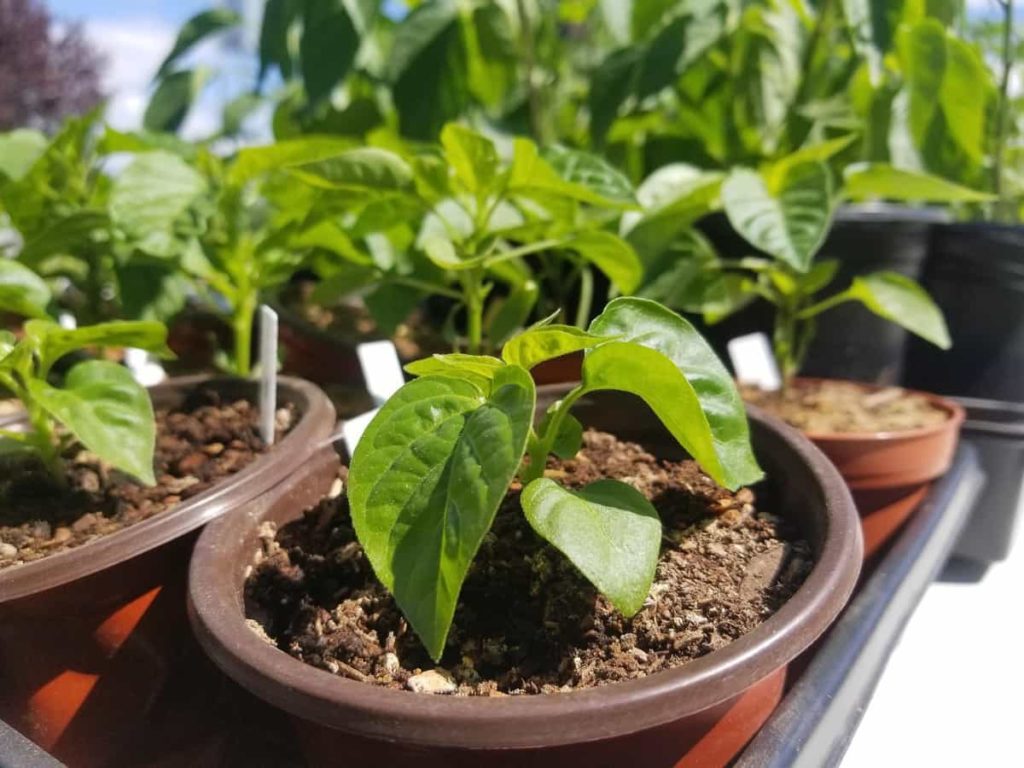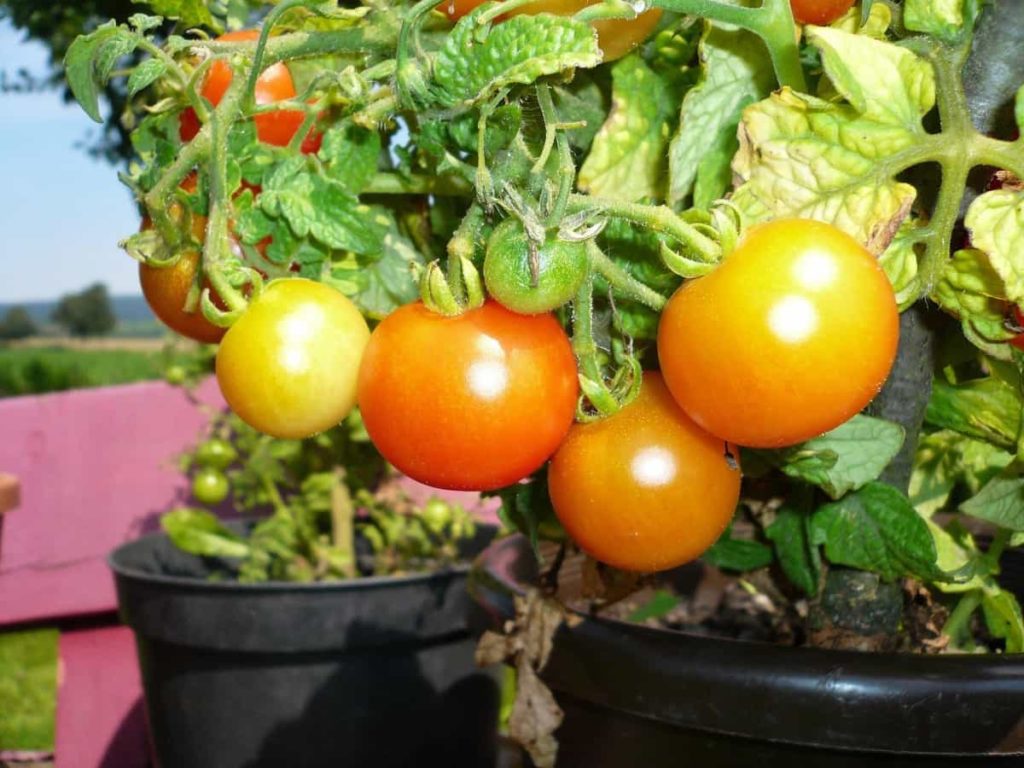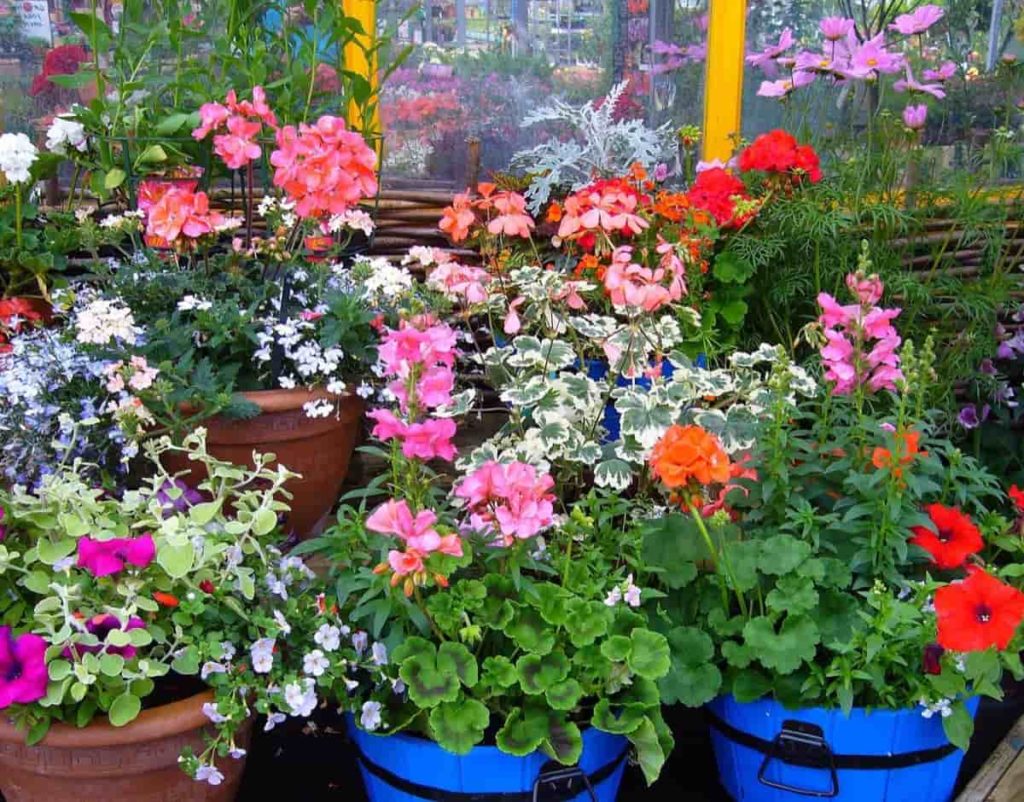Container gardening allows homeowners to grow indoor houseplants or vibrant outdoor annuals in various ways. Container gardening makes it simple to relocate plants if the light or temperature conditions aren’t favourable. Container plants in the house not only purify the air but also provide aesthetic appeal. People who don’t have access to a big yard or garden can still produce their veggies, herbs, and flowers in outdoor containers.

It can be more straightforward for gardeners with physical restrictions to maintain plants in elevated containers rather than those rooted in the ground. However, plants that flourish in pots and a wide variety of attractive containers available from local stores and garden centres mean that the options are almost unlimited. Let’s check out more information about Tennessee container gardening below.
There is a common set of requirements for all plants to thrive in the environment. Effectiveness with container-grown plants depends on appropriate control of growth elements such as light and water and the use of the right growing media. Whether inside or out, plants grown in containers have many traits, yet each has its requirements.
In this article, we tell you about Tennessee planning schedules, Tennessee garden plants and trees for containers, the best flowers to plant in Tennessee in containers, the best fruits to grow in Tennessee in containers, fruits and vegetables too, best outdoor and indoor potted plants for Tennessee and steps to grow different plants in containers.
Details of Tennessee USDA hardiness zones (planting zones)
As it is very close to the Gulf of Mexico, Tennessee has a climate classified as humid subtropical over the majority of the state and its many planting zones. The majority of the abundant precipitation that the state receives, which takes place for the most part in the months of winter and spring, is caused by winds from the south. The typical precipitation that falls throughout the year is around 50 inches.
Winters in Tennessee range from warm to chilly, while summers are hot and humid. The climate at the upper altitudes of the Appalachians can be described as humid continental, and the temperatures are generally lower. The quantity of snowfall that an area receives is highly dependent on its location; nonetheless, the high mountain ranges in the eastern regions of the state often get more than 16 inches of snow. Conversely, only approximately 5 inches may be expected in the western area.
Tennessee is unlikely to be hit by true storms because of its distance from the coast. On the other hand, the state will suffer the impacts of weakened tropical storms that bring excessive rainfall. There is a chance of tornadoes, with the likelihood of occurrence being highest in the western and central sections of the state. Temperatures that are considered to be yearly averages vary widely around the state. The average high temperature during the summer is in the middle of the 70s, while the average low temperature during the winter is slightly below 40 degrees.
There are various growth zones in Tennessee, from 5b to 8a. Gardeners all around the United States use growing zones to determine which kinds of plants, flowers, and vegetables will flourish in their particular location and which types are unlikely to be able to endure the winters there. Frost dates serve as the foundation for all hardiness zones, including the planting zones used in Tennessee.
Choose plants recommended for a planting zone lower than the one you are in Tennessee if you want the greatest results. Therefore, if you reside in zone 5b, you may grow anything classified for zones 1 – 5 without worrying about its survival. There is a diverse selection of flora in Tennessee, including plants, vegetables, and flowers.
In case you missed it: Illinois Container Gardening: Guide on How to Start with Vegetables, Flowers, Fruits, and Herbs at Home

Many different kinds of plants and flowers, including verbena, sage, lamb’s ear, coneflowers, swamp sunflowers, tickseed, Shasta daisies, common rue, and butterfly weed, grow very well in Tennessee gardens. In addition, there is a wide variety of veggies that will thrive in such an environment. In Tennessee, farmers plan to cultivate various vegetables, including savoy cabbage, carrots, kale, beets, sugar snap peas, potatoes, and more.
Tennessee container gardening: Steps to grow plants in containers in Tennessee
How to select the ideal container for container gardening?
There are many sorts of containers and many plants to choose from. Drainage holes are the most critical aspect when selecting a container, regardless of its colour, size or texture. Double potting may be used if you pick a pot that doesn’t include a drainage hole. You must put the plant in a container with drainage holes and then place it in the pot without drainage holes. In addition, the size of the container must be considered.
Summer blooming annuals, in particular, need a lot of root room in their containers because of their fast growth. Root development is restricted in small pots, which limits top growth. Flower count decreases as a consequence. Despite the popularity of tiny 6-inch flower pots, gardeners should consider using containers to accommodate several litres of potting mix. These are the most beautiful flowering plants. These plants also don’t need as much watering.
Container gardening can be done in nursery containers. A wide range of sizes ranges from 2 to 15 gallons in capacity, making them accessible and affordable. Most often, 3-to-7-gallon containers are utilised. Heavy fibre pots are very suitable in the modern kitchen. As long as they’re not planted directly in the ground, these lovely potted plants are an excellent value. However, termite damage is possible if fibre pots directly touch the soil.
Choose a high-quality potting mix
Container plants benefit significantly from commercial potting mixes. These mixes are known as “soilless mixtures” since they do not include soil but rather vermiculite, peat moss, and ground pine bark. The addition of these two components aids drainage and aeration. In addition to a wetting ingredient, the best commercial mixtures also include fertiliser and lime. Gardeners who need a few cubic feet of space for container plants should use commercial combinations.
In case you missed it: Iowa Container Gardening: Guide on How to Grow Vegetables, Fruits, Herbs, and Flowers at Home

The potting mix should be prepared by those who wish to grow many container plants. This can be done with good farm soils. Improve the drainage properties of sandy or clay loams by mixing organic debris. Several formulae work, but a 50/50 combination of soil and organic matter works nicely. Ground pine bark, with particle sizes ranging from 1/4 inch to 3/8 inch, is an excellent organic matter supplement.
For potting purposes, nurseries normally have this kind of bark on hand. Pine bark can be fresh or composted. Before use, compost the hardwood barks. It is also possible to employ peat moss as a source of organic matter. Peat moss of the coarser kind is suggested. Avoid peat mosses with a fine, slimy texture. Drainage and aeration are negatively affected.
Start planting your container plants
Before potting, the potting soil should be wet. Media that is supposed to be moist should feel slightly damp but not wet, indicating that no water is leaking. Watering in freshly potted plants is easier with a pre-moistened potting mix. Extremely dehydrated peat or pine bark is almost impossible to rehydrate. To avoid damaging or killing a plant, never pot a plant with its crown exposed.
The “substrate-line” is the area where the crown meets the media. Over-planting can harm the plant’s crown if the roots are submerged too deeply under the substrate line. Conversely, soil drying impacts can cause root desiccation when plants are planted too shallowly. To assure container plant success, fill a third of the pot with potting material. Aim for a reservoir depth slightly higher than the plant’s subsoil line.
After doing so, fill up the space surrounding the roots with medium, ensuring the new substrate line with the old substrate line. The plant and potting mix are slightly over the target reservoir depth. Give the container a little shake in both directions to ensure that the potting mix is distributed evenly over the plant’s crown.
Re-wetting establishes the proper reservoir level for the fresh potting mix and the plant it’s in. Compaction can be avoided by avoiding practices such as tamping the container or pressing the soil down around the crown. It is possible to secure the plant with stakes if they need it.
Water needs for your container plants
Unlike “in-ground” landscaping, container gardens need more regular watering since the containers’ exposed edges result in higher evaporation. In particular, unglazed ceramic pots dry up more rapidly than plastic containers. When plants become bigger, even plastic pots may need to be watered daily or twice daily. Fine roots will perish if containers are allowed to dry out entirely.
Aside from shrinking away from the container, excessive drying of the potting medium makes it more difficult to re-wet. In addition, some potting soils incorporate water-holding polymers or gels that can be purchased. Add too much polymer to the soil, and the soil can leak out of the pot. It’s also possible that watering upkeep might be reduced using modern self-watering pot systems.
Preventing salt accumulation can be accomplished by watering entirely, with 10% of the water provided draining out the bottom. Salt build-up is harmful to plants, resulting in burnt leaf margins, stunted development and fewer flowers. When drain water is poured into saucers, empty them to avoid salt from building up.
With a kitchen baster, this can be done quickly; however, don’t use it in the kitchen again. Soluble nutrients are often transported to container plants’ roots through the water. Due to the need to fertilise container plants regularly, salt management is critical when dealing with fertilisers.
How to fertilise container plants?
Fertilise container plants 2 to 3 weeks following the planting if fertiliser was added to the potting mix. After this phase, nutrient levels often begin to decline because plants use up the nutrients, and excessive watering causes nutrients in the soil to be leached away. It is best to fertilise succulent and soft-skinned annuals and perennials 2 to 3 weeks after potting them. Fertilisation cycles vary according to technique.
For example, apply a liquid soluble fertiliser every 2 to 3 weeks during the growing season. To encourage faster development, fertilise once every 1 to 2 weeks. A routine watering is all that is needed to apply soluble fertiliser. The solution should be applied so that a small amount drips out of the container. Apply a dry, garden-type fertiliser every 3 to 4 weeks if you use it. One-half teaspoon of fertiliser per gallon of soil mixture, uniformly placed on the soil’s surface, is required. After fertiliser application, the nutrients are dissolved and transported to the roots by watering.
As a result of watering with fertiliser, the risk of harm to stems and roots is reduced. Fertilisers with a slow-release rate are common. Small, spherical tablets are available for purchase. When they get moist, they slowly release fertiliser. It’s most common to use the kind that lasts for around three months. As a rule of thumb, use one teaspoon per gallon of soil. Read the container’s instructions since items and speeds might vary.
How to manage pests and diseases in container plants?
There is no increase in the risk of pests or diseases for plants grown in containers compared to those grown in loose soil. The utilisation of soilless potting mixes has the potential to eradicate some weed and insect issues practically entirely. It is possible to stave off potential problems with plants by doing routine checks on them. You can get rid of insects by handpicking them or using a suitable pesticide by spraying or dusting the area.
Choose plant kinds that are resistant to disease to aid in disease prevention. When a disease is discovered, the sick plant should be cut down and thrown away, or the affected area should be sprayed or dusted with a fungicide that has been prescribed. An excellent technique for maintaining cleanliness, removing dead leaves and flowers can help deter insects and disease-causing organisms from infesting an area.
Best vegetables to grow in containers in Tennessee
Some veggies that grow well are tomatoes, potatoes, asparagus, radishes, spinach, peas, beans, squash, pumpkins, and cucumbers. Some of the details are given below.
In case you missed it: Hawaii Container Gardening: Guide on How to Start with Vegetables, Fruits, Flowers at Home

Asparagus: Asparagus is a perennial crop that takes 2 to 3 years to mature and harvest, but it will continue to produce each year if you plant it in a permanent location. With nutrient-rich soil and lots of water, asparagus should be planted in 6 to 8 inches deep trenches. In addition, the rear border of flower and vegetable gardens and around the perimeter of a fence may benefit from adding asparagus.
Radishes: To avoid the risk of radishes going to seed in the hot summer months, plant them and harvest them before the weather gets too hot. Radish plants flourish in full sun to moderate shade and need wet, well-drained soil. In addition, the roots of these plants need to be able to spread out and develop a smooth surface, so they demand loose soil.
Spinach: If you have the right conditions, spinach thrives in the autumn in Tennessee. Planting spinach should occur after the hottest part of the summer has passed. After six weeks, this plant will offer luscious greens.
Tomatoes: There is a significant risk of blight disease and extreme heat in growing these crops, but the reward is enormous. Planting tomatoes from seed is simple, and the fruits can be canned or frozen and eaten fresh. Stagger your plants to free up more floor space.
In case you missed it: Wisconsin Container Gardening: How to Start with Vegetables, Fruits, Flowers, and Herbs at Home for Beginners

Cucumbers: Growing cucumbers from seed is a simple and inexpensive process. Avoid using pesticides and sow fresh seeds every few weeks during the summer to ensure a steady supply. If wilt wipes out the elder plants, the younger ones will take over.
Best fruits to grow in containers in Tennessee
Many fruits, including plums, blackberries, raspberries, strawberries, blueberries, berries, peaches and apples, can be grown in containers in Tennessee. Some of the details are mentioned below.
Apples: These trees can thrive in USDA Zones 5-8, well suited to the state’s climate. Tennessee gardeners can also use hardy types that grow well in USDA Zones 3-5 in colder places to provide excellent fruiting despite the chilly temperatures.
Pears: Pears are a close second in terms of fruit popularity. On the other hand, Pears are a popular choice for home gardeners. Low-maintenance gardens benefit significantly from these trees’ lower susceptibility to pests and diseases.
Peaches: If you’re looking to grow pears and apples in colder sections of Tennessee, you’ll want to go elsewhere for peaches, which need warmer conditions. You can have trouble getting the most out of your peach trees if you live in a cooler part of Tennessee, like Zone 5. Hot, muggy weather is ideal for them, and they despise temperatures below 10 degrees Fahrenheit.
Plums: While talking about stone fruits, Tennessee gardeners might consider plums an excellent alternative. Plums need constant irrigation to yield luscious fruits, particularly when minimal rain. Mulch helps retain moisture, lowering the frequency and quantity of water required. Fruit yield will be considerably enhanced if you fertilise regularly.
Cherries: Stone fruits include cherries, despite their tiny size. On the other hand, Cherries require a colder climate than peaches and apricots.
Best herbs to grow in containers in Tennessee
Oregano, Basil, thyme, sage, lavender, coriander, and mint are some of the greatest herbs to grow in the spring. They’re all thriving in the hardiness zone in Tennessee. Some of them are listed below.
Chives: The ultimate, savoury garnish is chives and spring onions. As one of the simplest culinary herbs to grow, thyme can help beginning gardeners gain self-assurance. For best results, space your seeds 4 to 6 inches apart and harvest them every two inches. Typically, they reappear in the spring.
Cilantro: It’s used in a wide range of cuisines, from Mexican to the Mediterranean to Asian, because of its versatility. Your cilantro plants should be placed 6-8 inches apart, and you should shield them from the summer sun’s heat.
Lemon balm: Ideally, it should be eaten raw and uncooked. You don’t want it to lose any of its wonderful scents. To combat mosquitoes and other pests, it is useful in herb planting. Unlike mint, it spreads quickly, so it’s best to grow it independently or with another member of the same species. To ensure healthy germination, space seeds out by 12-18 inches.
Mint: Mint is one of the first plants that come to mind when thinking about warm-weather culinary delights. Just as you would lemon balm, plant your mint in pots and space the seeds 18-24 inches apart.
Oregano: Dried oregano, sometimes known as the “pizza herb,” evokes images of the Italian meal whenever it’s in the air. Keep the seeds 8 to 10 inches apart when planting them since it is a vigorous grower.
Best flowers to grow in containers in Tennessee
Many types of flowers can be grown in containers in Tennessee, like asters, rose verbena, oxeye sunflower, butterfly weed, Shasta daisies, tickseed, irises, goldenrods, coneflowers, marigolds and many more. Some of them are listed below.
In case you missed it: Pennsylvania Container Gardening: How to Start with Vegetables, Fruits, Herbs, and Flowers at Home for Beginners

Coneflowers: A single plant can reach a height of 3 to 4 feet, and each year, the clusters spread by 2 to 4 inches. This plant’s leaves are a little fluffy and a shade of green. These daisy-like coneflower flowers measure 2.5 or more inches wide in diameter.
Shasta daisies: Sun-loving Shasta daisies can reach 3 to 4 feet. This alternative loves drier circumstances because of its white petals and yellow centre disc. Mid-summer and early autumn are the best times to see the flowers, measuring up to four inches wide. The coarsely serrated, lance-shaped leaves have a medium green colour.
Irises: Easy-to-grow irises like full sun but will also thrive in the moderate shade. Root rot can occur if the soil is not adequately drained. Keep weeds at bay by mulching around the plant’s base.
African marigolds: Plants like African marigolds, sometimes known as American marigolds, are great for bedding or backdrop. When fully grown, the plant can reach a height of 10 to 36 inches, with 5-inch-wide double flowers. Marigolds bloom from orange to yellow in the middle of summer. Until the first frost of September, flowers bloom.
Rose verbena: A clump-forming plant, rose verbena reproduces and disperses rapidly. Plants such as this one thrive in light and well-drained soils. It can grow up to 18 inches tall and develops new plants at the nodes where the leaves meet the ground.
- Gardening Techniques in Planting Vegetables
- Where to Place Indoor Plants in Your Home
- How to Grow Tomatoes Organically at Home: A Comprehensive Guide
- Organic Gardening on a Budget: Low-Cost Methods and Materials
- Gongura Seed Germination and Planting Methods
- Cabbage Seed Germination and Selection
- Broccoli Seed Germination and Selection
- Asparagus Seed Germination and Variety Selection
- Seasonal Flower Gardening: Best Practices for Spring, Summer, Fall, and Winter
- How to Grow Hibiscus from Flower
- Plantation Ideas for Home Decoration: A Beginners Guide
- Flower Garden Designs and Layouts for Beginners
- Planting and Spacing Techniques in Papaya: A Beginner’s Guide
- Growing Gold: Essential Techniques for Planting Pineapples
- How to Make Kalanchoe Plant Bushy: Home Remedies and Solutions
- 11 Reasons Why Your Gardenia is Not Blooming: Home Remedies and Solutions
- Eco Elegance: The Guide to Designing a Drought-Tolerant Landscape
- Gardening on a Slope: Strategies for Hillside Landscaping
- Nourish and Flourish: Top Organic Mulches for Thriving House Plants
- Everything You Want to Know about Indian Mogra Flower: Discover Uses and Growing
- Green Thumb Success: Expert Tips for Cultivating Greenhouse Pumpkins All Year Round
- Maximize Growth & Flavor: The Ultimate Guide to Companion Planting in Herb Gardens
- How to Control Rhododendron Problems Naturally: Home Remedies and Organic Ways to Fix Them
- Natural Magic: The Remarkable Benefits of Cinnamon for Plants
- Best Steps to Revive Dying Tulip with Natural and Organic Treatment
- 10 Reasons Why Your Angel Trumpet is Not Blooming: Remedies and Treatment
- How to Fix Periwinkle Leaf and Flower-Related Problems: Natural Remedies and Solutions
- How to Fix Zinnias Leaf and Flower Problems: Discover Natural and Home Remedies
- Organic Steps to Induce Lemon Tree Flowers: A Comprehensive Guide
- Bloom Booster: Crafting the Perfect Homemade Bougainvillea Fertilizer
- Optimizing Growth: A Guide to Applying NPK Fertilizer for Potted Plants
- 10 Best Homemade Fertilizers for Rubber Plant: DIY Recipes and Application Method
- How to Boost Female Pumpkin Flowers: Effective Steps for More Flowers and High Yields
- Transform Your Indoor Garden: Top Benefits of Pink Salt for Houseplants
- 10 Best Homemade Fertilizers for Peacock Plants (Calathea): Easy DIY Guide
- Unlock Blooms: 9 Reasons Why Your Potted Chrysanthemum is Not Blooming